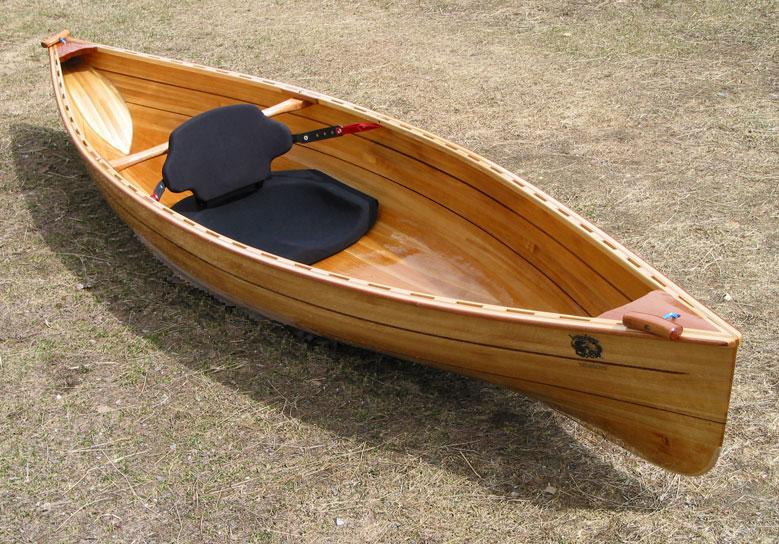
Building a Canoe from Cedar Wood: A Journey in Woodcraft
The scent of cedar, the feel of smooth, warm wood, the rhythmic tap of a mallet - these are the hallmarks of building a canoe from scratch. It's a labor of love, a testament to the enduring craft of woodworking, and a journey that culminates in a vessel as graceful as the waters it will traverse. This article will guide you through the process, from initial planning to the final varnish, equipping you with the knowledge and inspiration to embark on your own canoe-building adventure.
Step 1: Design and Planning
Before you even pick up a saw, it's essential to meticulously plan your canoe. Choose a design that suits your needs and skill level. Consider factors like length, width, and the desired carrying capacity. Research different canoe designs, consult books, and browse online resources for inspiration. You can even find free plans online or purchase detailed blueprints. Once you have a design in mind, create a scaled drawing, ensuring all measurements are accurate.
Choosing the Right Cedar
Western red cedar is the preferred wood for canoe building due to its natural resistance to rot, its light weight, and its beautiful grain. When selecting your cedar, look for boards that are free of knots, cracks, and other imperfections. The thickness of the boards will depend on the design, but typically they range from 1/4 to 1/2 inch. Remember, you'll need enough wood to construct the hull, seats, gunwales, and any other desired features.
Step 2: Cutting and Shaping the Hull
With your design finalized and your cedar boards ready, it's time to start shaping the canoe's hull. Using a bandsaw, jigsaw, or hand tools, carefully cut the planks according to your plan. Ensure that your cuts are precise and that all planks are the same length and width. After cutting, the planks need to be shaped to fit the curvature of the hull. This can be done using a variety of techniques, including steam bending, heat bending, or by carefully shaping the wood with a plane and sander.
Constructing the Framework
While shaping the planks, you'll also need to construct a strong framework to support the hull. This framework, typically made from cedar or oak, includes the stem (front and back), the ribs, and the keel. The stem and keel are the backbone of the canoe, while the ribs provide support and shape. Once the framework is in place, the planks are attached to it using screws, nails, or wooden dowels. This process requires careful attention to detail to ensure a strong and watertight hull.
Step 3: Finishing Touches
After the hull is assembled and the framework is securely in place, it's time to add the finishing touches. These include:
- Adding the gunwales: The gunwales are the upper edge of the hull, providing strength and a place for the seats and thwarts to attach.
- Installing the seats and thwarts: These are the structural elements that provide support for the paddlers. They can be made of cedar or oak, and are typically shaped for comfort.
- Sanding and finishing: Once the canoe is complete, it needs to be sanded smooth and finished to protect the wood. A good-quality marine varnish is recommended for durability and water resistance.
Step 4: Launching Your Creation
Finally, the moment you've been waiting for - the launch! After a thorough inspection and final touches, your cedar canoe is ready to take to the water. As you glide across the lake or river, you'll feel a sense of accomplishment and pride in your creation. Enjoy the tranquility and beauty of nature from the seat of your handcrafted canoe, a testament to your skill and passion for woodworking.
Beyond the Basics
Building a canoe from cedar is a rewarding experience, but it's just the beginning. There are many other aspects of canoeing to explore, including:
- Paddling techniques: Learning the proper paddling techniques will enhance your enjoyment and efficiency on the water. Enroll in a paddling class or seek guidance from experienced canoeists.
- Safety precautions: Canoe safety is essential. Always wear a personal flotation device (PFD) and be mindful of weather conditions. Inform someone of your paddling route and expected return time.
- Maintenance and care: Proper maintenance will extend the life of your cedar canoe. Store it in a dry place, clean it regularly, and apply varnish as needed.
Building a canoe from cedar wood is a journey of discovery, a celebration of craftsmanship, and an invitation to connect with nature. So, gather your tools, choose your design, and embrace the challenge. The reward is a timeless vessel that will bring you countless moments of joy and adventure on the water.


0 comments:
Post a Comment